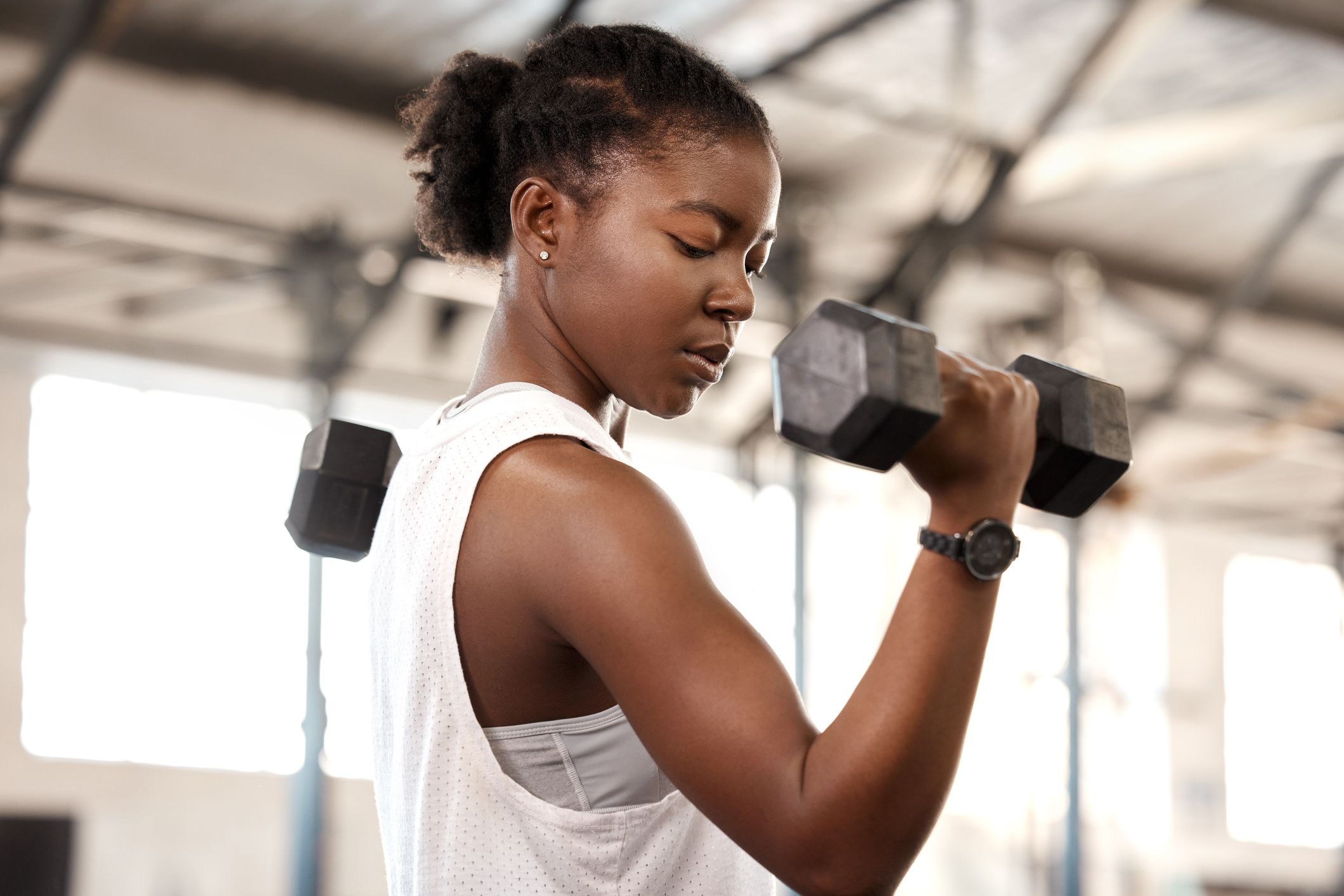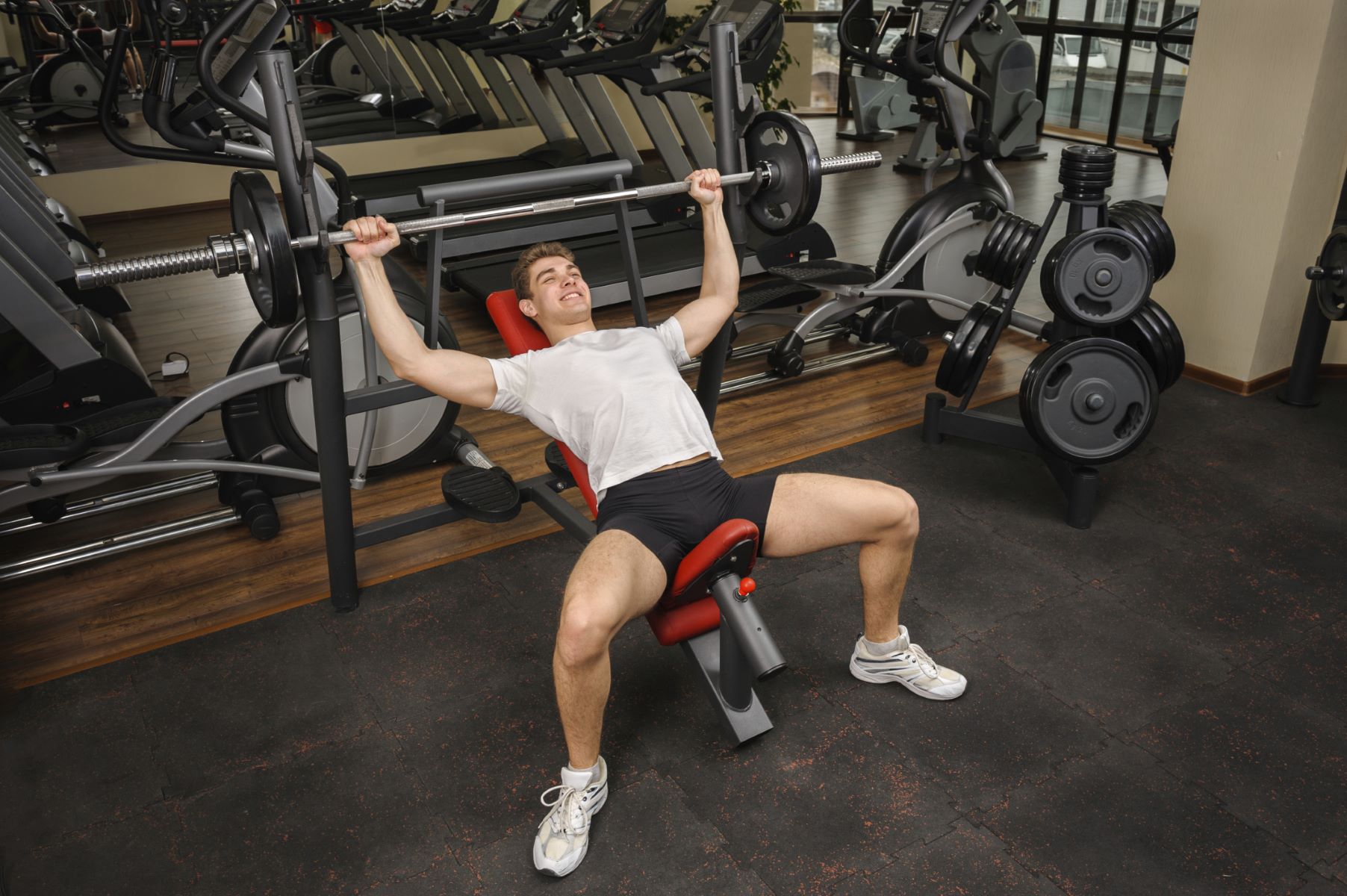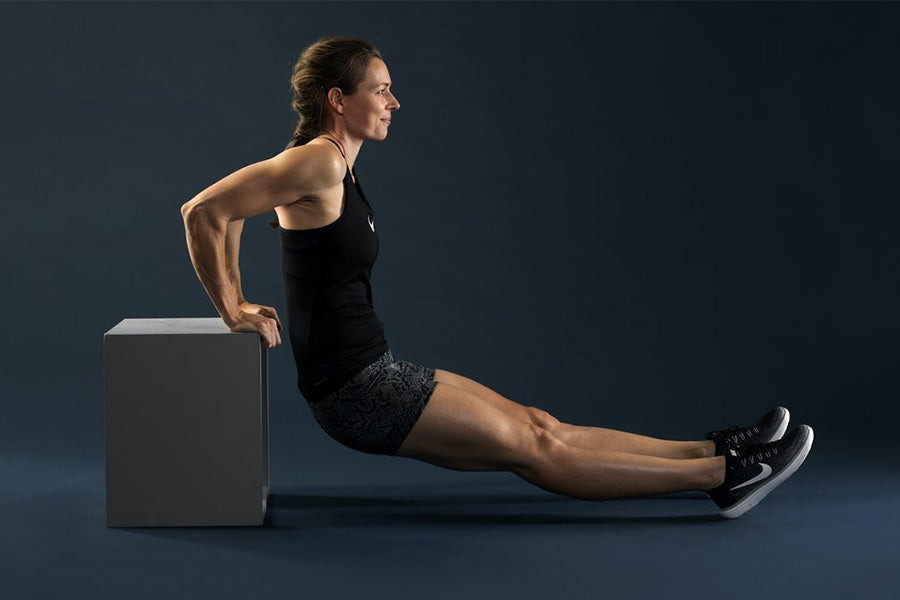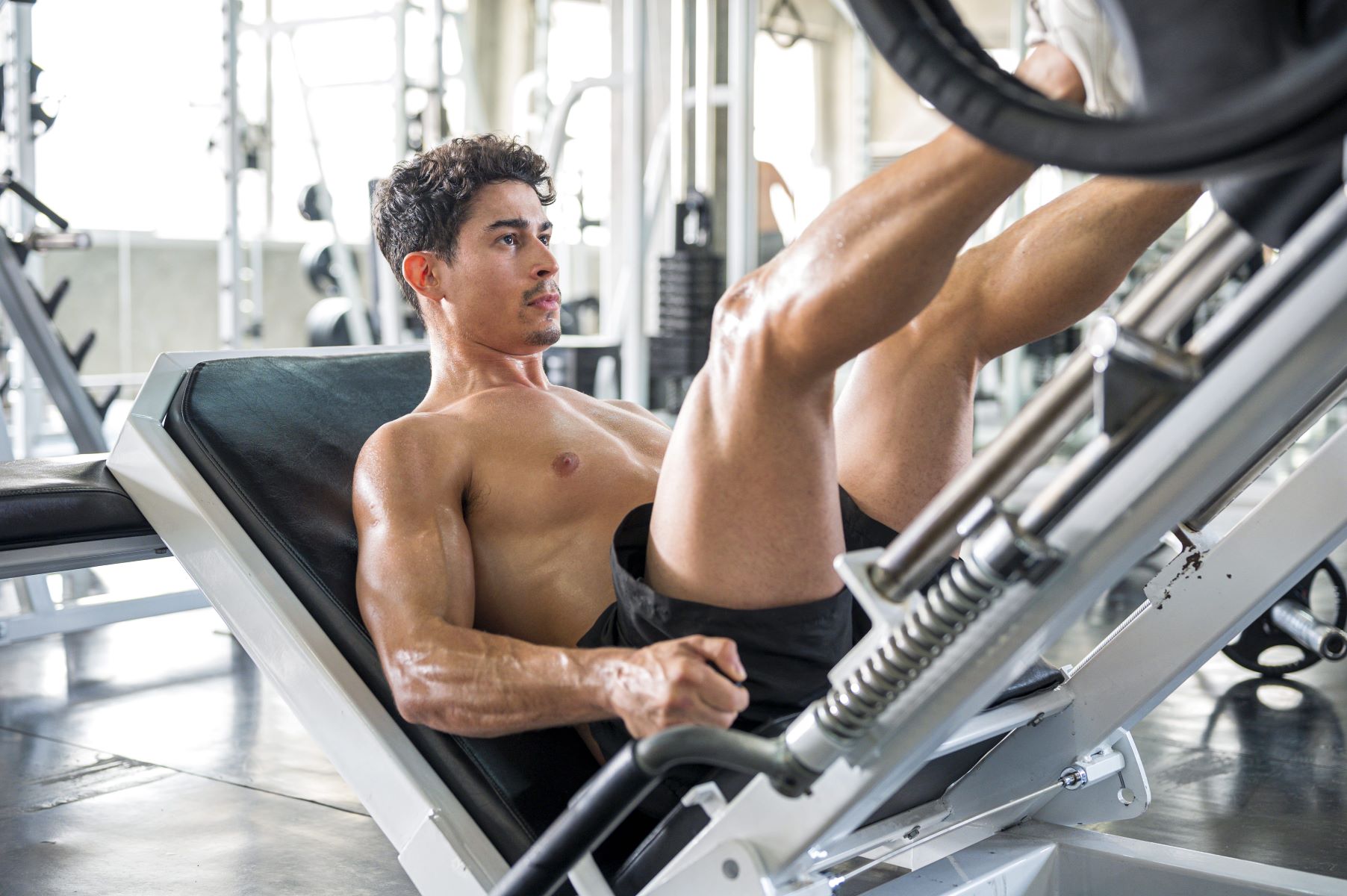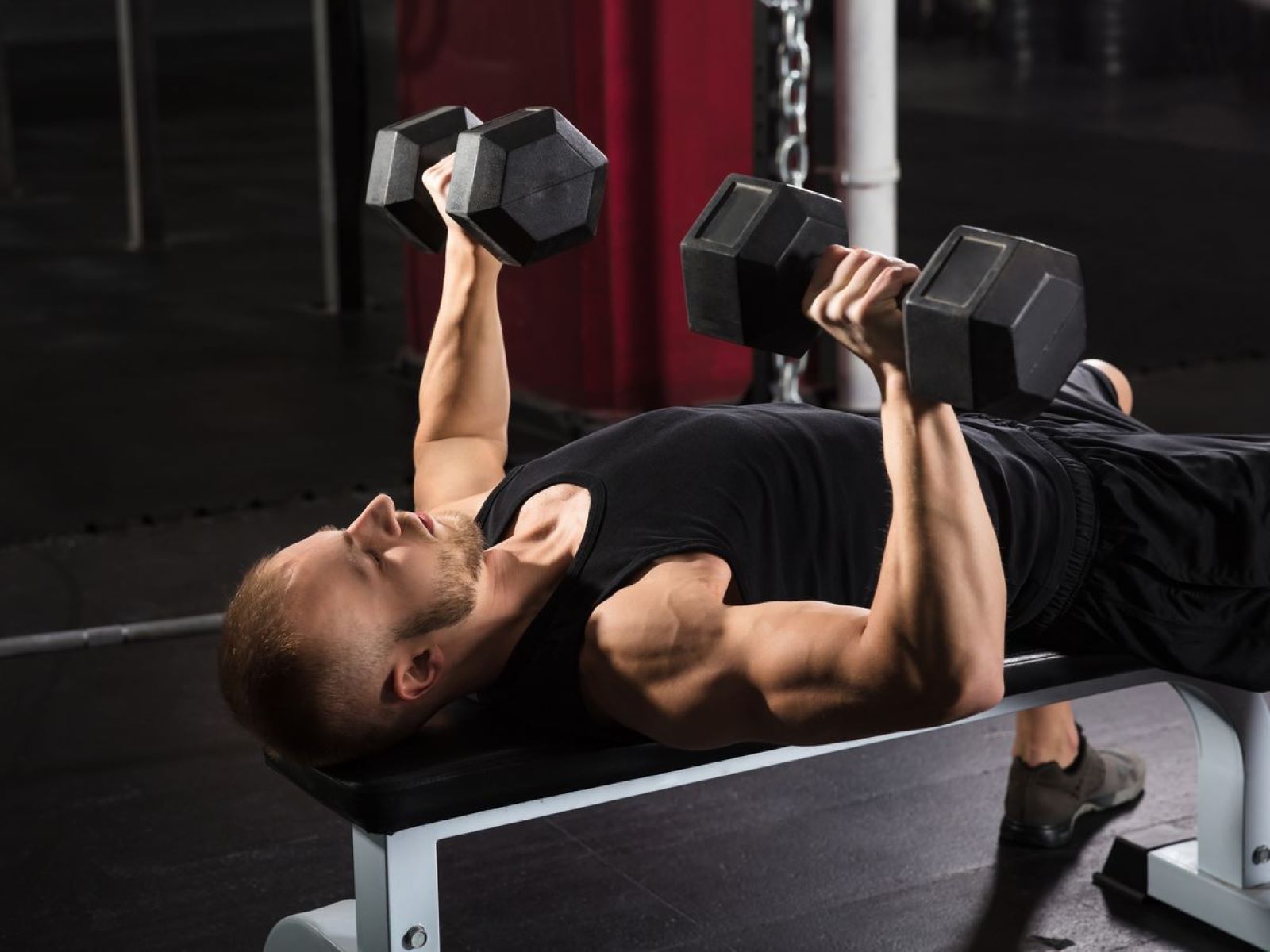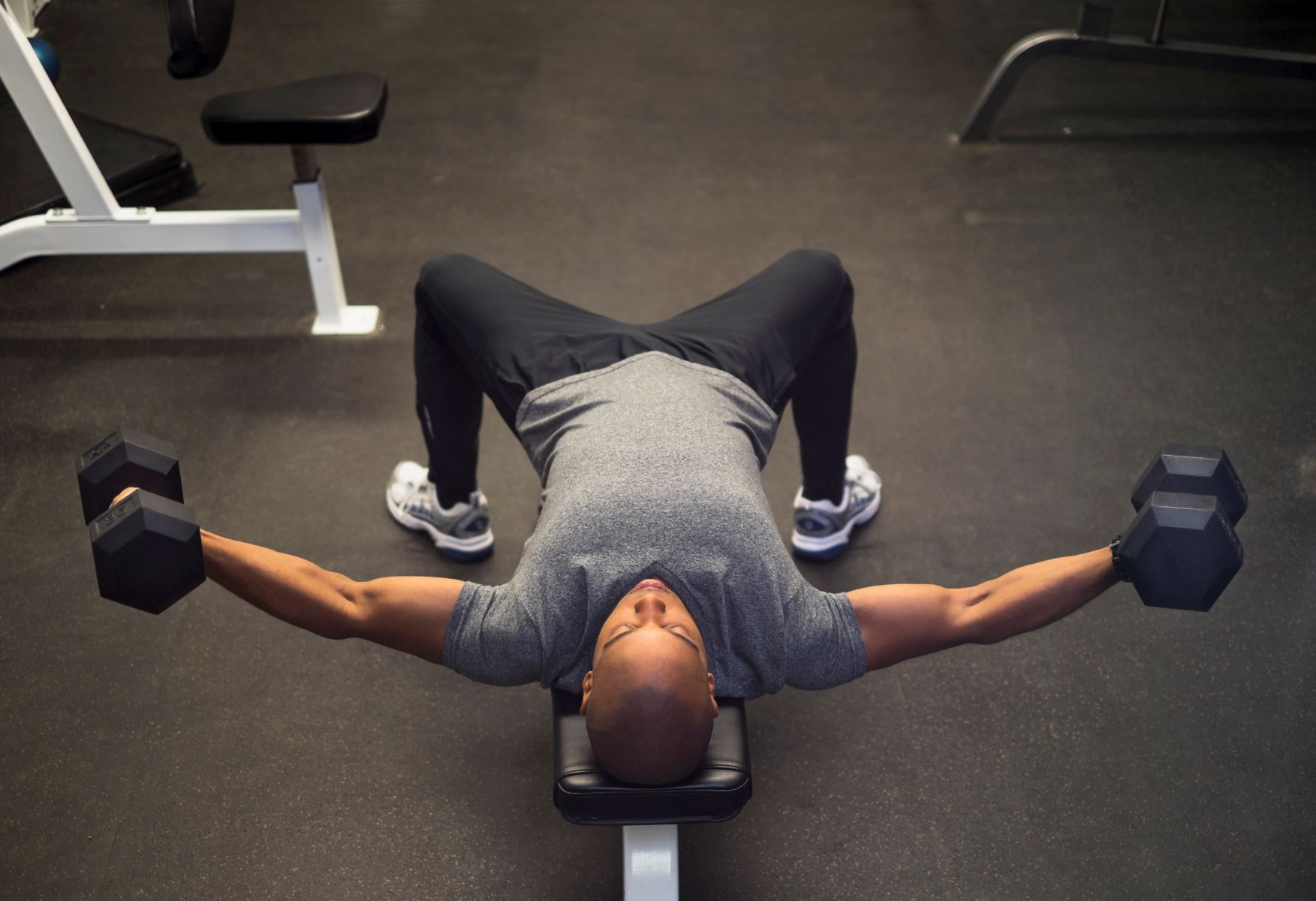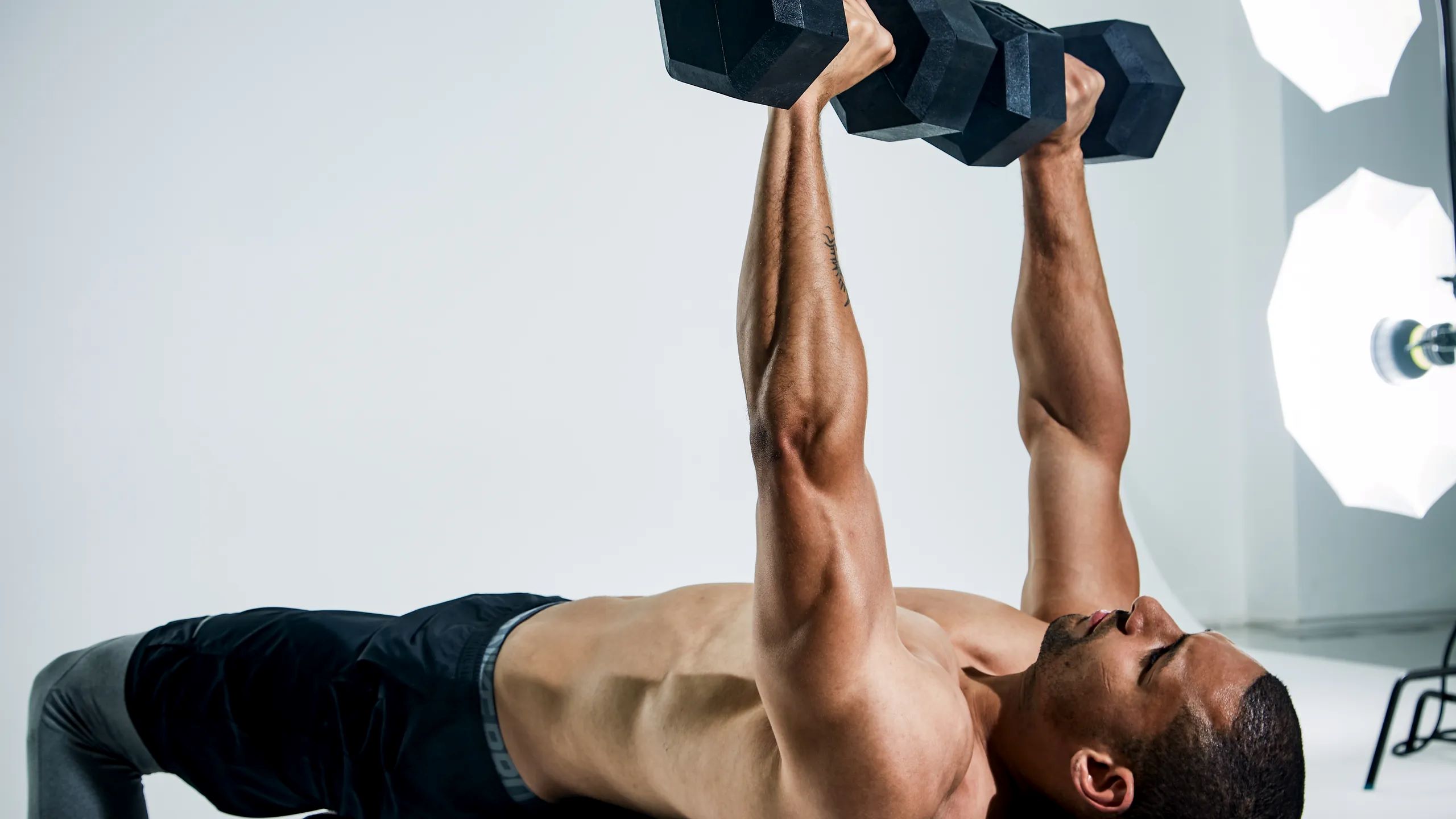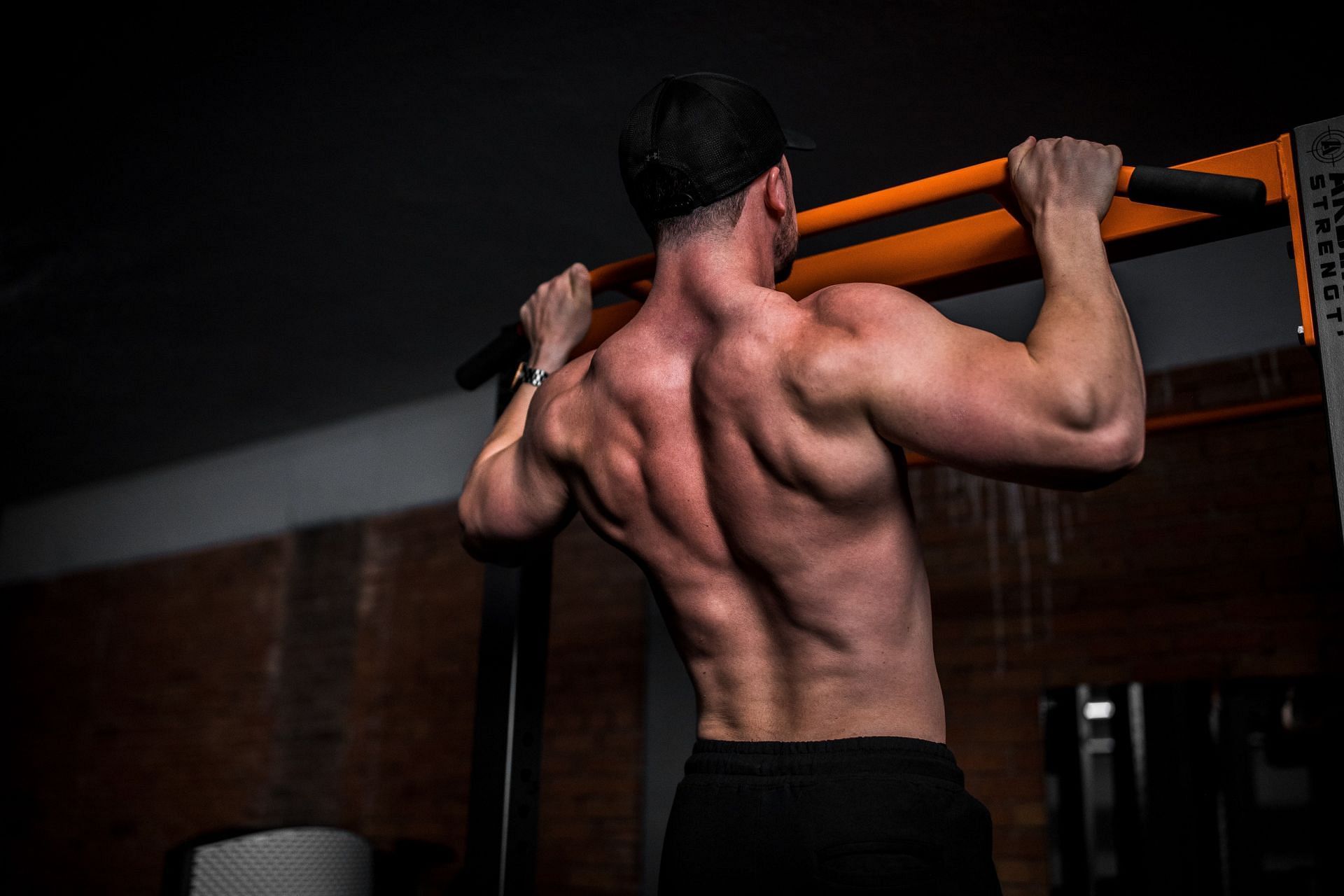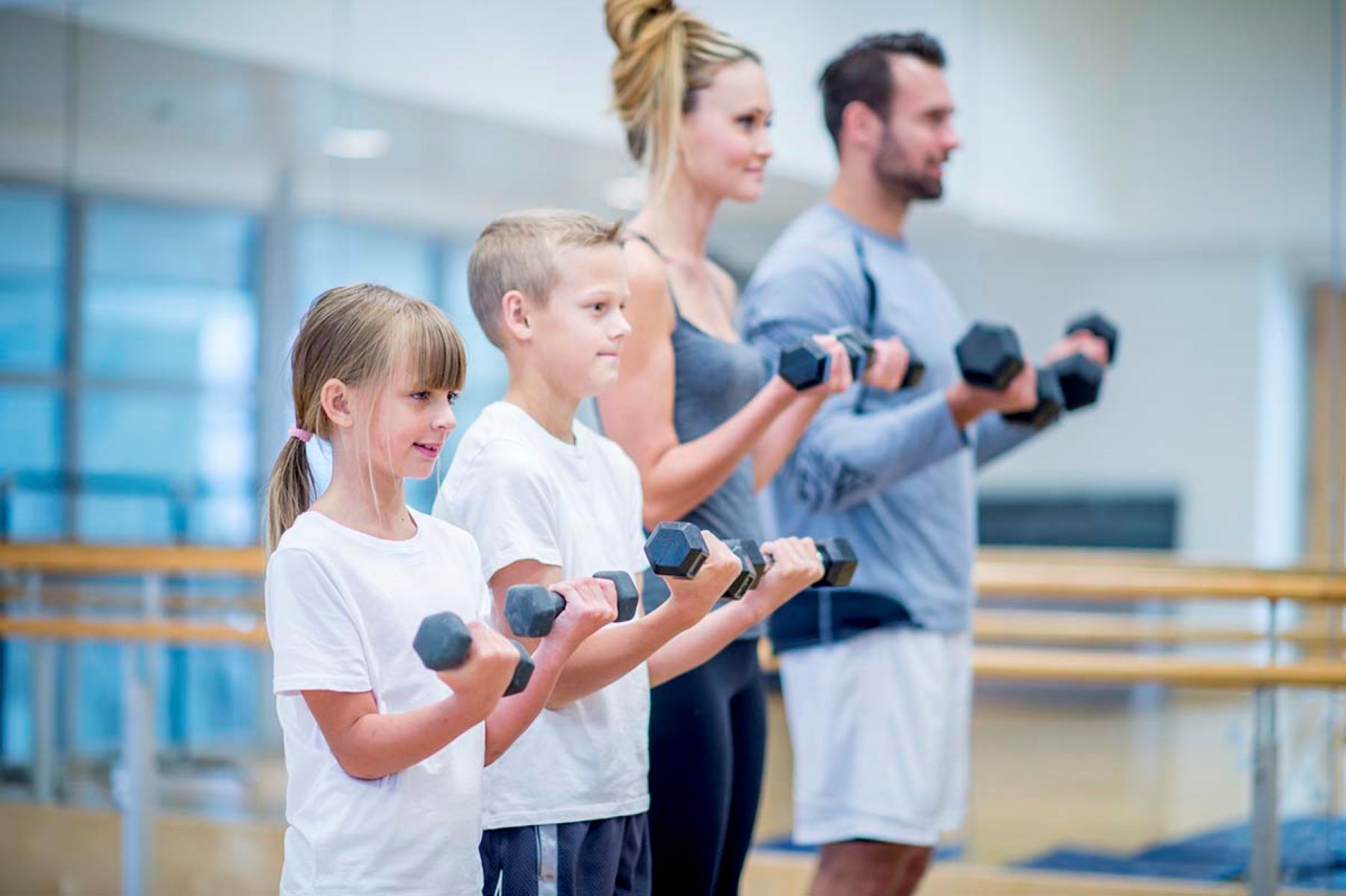How To Workout Triceps
Introduction
When it comes to building strong and well-defined arms, most people tend to focus on biceps exercises. While biceps certainly play a role in achieving impressive arm strength, it’s equally essential to prioritize the triceps. The triceps, located on the backside of the upper arm, make up a significant portion of the arm’s overall muscle mass and contribute to arm stability and power.
Developing strong triceps not only improves your arm aesthetics but also helps in enhancing your overall upper body strength. Tricep workouts target the three heads of the triceps muscle, which are responsible for arm extension and elbow stability. By incorporating a variety of exercises, proper form, and technique, you can effectively sculpt and strengthen your triceps.
In this article, we will guide you through a comprehensive tricep workout routine that can be tailored to your fitness level, whether you’re a beginner or advanced athlete. We’ll cover basic tricep exercises, advanced variations, tips on incorporating equipment, common mistakes to avoid, and valuable tips to maximize tricep growth.
Importance of Tricep Workouts
While many individuals strive for sculpted arms, the triceps often get overlooked in favor of biceps exercises. However, understanding the importance of tricep workouts can significantly impact your overall arm strength and aesthetics.
The triceps make up a substantial portion of the upper arm, contributing to more than two-thirds of its overall muscle mass. This means that neglecting to train this muscle group can leave your arms looking imbalanced and underdeveloped.
Not only do well-developed triceps enhance the visual appeal of your arms, but they also play a crucial role in upper body strength and functional movements. Strong triceps contribute to arm stability, improve pushing and pressing movements, and assist in generating power for activities like pushing a heavy object or performing a bench press.
Properly trained triceps can also help prevent imbalances and injuries. Many individuals tend to have stronger biceps compared to their triceps, leading to muscle imbalances. This muscular imbalance can affect shoulder stability and joint mechanics, increasing the risk of shoulder and elbow injuries. By incorporating tricep workouts, you can strengthen the triceps to alleviate these imbalances and promote overall joint health.
Additionally, performing tricep exercises can have a positive impact on other upper body exercises. Strong triceps can assist in exercises such as bench presses, push-ups, and dips by providing additional strength and stability during these movements. By strengthening your triceps, you can improve your performance in various upper body exercises and maximize your overall strength gains.
Whether your goal is to achieve well-defined arms, improve upper body strength, or prevent injuries, incorporating tricep workouts into your exercise routine is essential. By dedicating time and effort to training your triceps, you can achieve balanced, powerful, and aesthetically pleasing arms.
Getting Started with Tricep Workouts
If you’re new to tricep workouts or looking to improve your current routine, starting with the basics is key. By establishing a solid foundation, you can gradually progress to more advanced exercises and achieve optimal results. Here’s how to get started:
1. Warm Up: Before diving into any workout, it’s crucial to warm up your muscles to prevent injury and prepare them for the upcoming work. Spend 5-10 minutes engaging in light cardio, such as jogging or jumping jacks, followed by dynamic stretches targeting the arms and shoulders.
2. Choose Your Exercises: Select a variety of tricep exercises that target all three heads of the muscle. Begin with compound movements that engage multiple muscle groups, such as close-grip push-ups or tricep dips. Once you’ve built a foundation, include isolation exercises like tricep kickbacks or tricep rope pushdowns.
3. Determine Your Reps and Sets: For muscle growth and strength development, aim for 8-12 reps per set. Start with 2-3 sets of each exercise and adjust according to your fitness level. Beginners may start with lighter weights and higher reps, gradually increasing intensity and weight as they become more comfortable.
4. Focus on Form: Proper form is essential in tricep workouts to maximize effectiveness and prevent injury. Pay close attention to your body’s alignment, engage your core, and avoid using momentum or swinging to complete the movements. If needed, seek guidance from a fitness professional to ensure correct form.
5. Rest and Recovery: Allow your muscles ample time to recover between workouts. Aim for 48-72 hours of rest before targeting the triceps again. During this time, focus on other muscle groups or incorporate active recovery exercises like yoga or light stretching.
6. Progression: As you become comfortable with your routine, gradually increase the intensity of your exercises. This can be achieved by adding more weight, performing more challenging variations, or increasing the total number of sets and reps.
Remember, consistency is key when it comes to tricep workouts. Aim for 2-3 tricep-focused sessions per week, incorporating a mix of compound and isolation exercises. By following these steps, you’ll be well on your way to building and strengthening your triceps.
Proper Form and Technique
When performing tricep exercises, maintaining proper form and technique is crucial. Not only does it maximize the effectiveness of your workouts, but it also reduces the risk of injury. Here are some key tips to ensure you’re executing tricep exercises correctly:
1. Maintain Proper Posture: Stand or sit tall with a straight back and engage your core. Avoid slouching or leaning backward, as this can put unnecessary strain on your back and shoulders.
2. Control the Movement: Focus on controlling the eccentric (lowering) and concentric (raising) phases of each exercise. Avoid using momentum or swinging to complete the movement, as this diminishes the effectiveness of the exercise and increases the risk of injury.
3. Engage the Triceps: During tricep exercises, actively engage your triceps throughout the entire range of motion. Visualize the muscle contracting as you perform the movement to ensure you’re targeting the triceps effectively.
4. Avoid Excessive Elbow Movement: Maintain a stable position with your elbows close to your sides. Avoid allowing your elbows to flare out, as it can place unnecessary stress on the shoulder joint and reduce the engagement of the triceps.
5. Use Proper Grips: Depending on the exercise, experiment with different grips to find what works best for you. For example, on tricep dips, an overhand grip with your palms facing down may be more comfortable, while on exercises like tricep pushdowns, a neutral grip with your palms facing each other may feel more natural.
6. Breathe Properly: Remember to control your breathing throughout the exercises. Inhale during the eccentric phase (lowering) and exhale during the concentric phase (raising) to maintain a steady rhythm and provide your muscles with sufficient oxygen.
7. Use Appropriate Weight: Choose a weight that challenges you but allows you to maintain proper form throughout the exercise. It’s better to start with lighter weights and focus on mastering the technique before progressing to heavier loads.
8. Seek Professional Guidance: If you’re unsure about proper form or technique, consider working with a certified personal trainer or fitness professional. They can provide guidance, correct any form mistakes, and help you optimize your tricep workouts for maximum results.
By prioritizing proper form and technique, you’ll not only make your tricep workouts more effective but also reduce the risk of injury and ensure long-term progress. Take the time to learn and practice the correct techniques for each tricep exercise to reap the full benefits of your workouts.
Basic Tricep Exercises
When it comes to targeting the triceps, there are several basic exercises that are highly effective. These exercises engage the triceps muscles and can be performed with minimal equipment. Here are some of the most popular basic tricep exercises:
- Tricep Dips: Tricep dips are a compound exercise that primarily targets the triceps, chest, and shoulders. Start by sitting on a bench or chair with your palms placed on the edge, fingers facing forward. Walk your feet forward until your legs are extended and your buttocks are off the bench. Lower your body by bending your elbows, then press back up to the starting position.
- Close-Grip Push-Ups: Close-grip push-ups focus on the triceps as the primary muscle group. Get into a push-up position with your hands shoulder-width apart, but bring them closer together so that your thumbs and index fingers form a triangle shape. Lower your body while keeping your elbows close to your sides, then push back up.
- Tricep Pushdowns: Tricep pushdowns can be performed using a cable machine or resistance band. Stand facing the cable machine or anchoring point with a straight back. Hold the handle or band with both hands, palms facing down. Bring your elbows close to your sides and extend your arms downwards until they are straight. Slowly return to the starting position.
- Overhead Tricep Extension: Hold a dumbbell or a weighted object with both hands. Stand with your feet shoulder-width apart and raise the weight above your head, keeping a slight bend in your elbows. Slowly lower the weight behind your head, bending your elbows and feeling the stretch in your triceps. Raise the weight back to the starting position.
- Tricep Kickbacks: Stand with your feet hip-width apart and hold a dumbbell in each hand. Bend your knees slightly and hinge forward at the waist, keeping your back straight. With your palms facing inwards, extend your arms behind you, squeezing your triceps. Slowly return to the starting position.
These basic tricep exercises provide an excellent foundation for developing strength and muscle definition in the triceps. As you become more comfortable with these exercises, you can incorporate variations and progress to more challenging movements to further engage and target the triceps.
Advanced Tricep Exercises
If you’re looking to take your tricep workouts to the next level, incorporating advanced exercises can help you challenge your muscles and promote further growth and strength development. These exercises target the triceps from different angles and intensify the workout. Here are some advanced tricep exercises to consider:
- Diamond Push-Ups: Diamond push-ups are a variation of the standard push-up that places greater emphasis on the triceps. Get into a push-up position, but bring your hands close together, forming a diamond shape with your thumbs and index fingers. Lower your body while keeping your elbows close to your sides, then push back up.
- Tricep Bench Dips: Tricep bench dips are a challenging exercise that targets the triceps, chest, and shoulders. Sit on the edge of a bench or chair and place your hands behind you with your fingers facing forward. Extend your legs out in front of you and lower your body by bending your elbows until your upper arms are parallel to the ground. Push back up to the starting position.
- Weighted Tricep Dips: If you’ve mastered tricep bench dips, you can add additional resistance by using a weighted dip belt or placing a dumbbell or weight plate on your lap. The added weight increases the intensity and stimulates further muscle growth.
- Tricep Skull Crushers: Lie flat on a bench or mat with a dumbbell in each hand. Extend your arms upward, palms facing each other. Lower the dumbbells towards your forehead by bending your elbows, keeping them close to your head. Extend your arms back to the starting position.
- Tricep Rope Pushdowns (Single-Arm): Using a cable machine and a rope attachment, stand facing the machine. With one hand, hold the rope attachment with an overhand grip. Bring the rope down by extending your arm while keeping your elbow close to your side. Return to the starting position and repeat on the other side.
It’s important to note that advanced tricep exercises require proper form and technique to avoid injury. Start with lighter weights or modifications to build strength and gradually increase the intensity as you become more comfortable. Always listen to your body and consult with a fitness professional if needed.
By incorporating these advanced tricep exercises into your workout routine, you can challenge your muscles in new ways and continue to progress towards your strength and aesthetic goals.
Incorporating Equipment into Tricep Workouts
If you want to add variety and intensity to your tricep workouts, incorporating equipment can be highly beneficial. Equipment not only provides resistance and additional challenges but also allows for a wider range of exercises. Here are some ways you can incorporate equipment into your tricep workouts:
- Dumbbells: Dumbbells are versatile and widely available, making them a popular choice for tricep exercises. You can perform tricep pushdowns, overhead tricep extensions, tricep kickbacks, and more by utilizing dumbbells to add resistance to your movements.
- Cable Machines: Cable machines are excellent for tricep workouts as they provide constant tension throughout the exercise. Attach a straight bar or rope handle to the cable machine and perform tricep pushdowns, overhead cable extensions, or single-arm cable pushdowns for a challenging workout.
- Resistance Bands: Resistance bands are portable and convenient, making them an excellent choice for home workouts or when you’re on the go. Use resistance bands to perform tricep pushdowns, overhead tricep extensions, or tricep kickbacks. The bands provide adjustable resistance, allowing you to modify the intensity based on your fitness level.
- Tricep Bars: Tricep bars, also known as EZ bars, are specially designed for tricep exercises. These bars have angled grips that relieve pressure on the wrists and allow for a comfortable and secure grip. With a tricep bar, you can perform exercises like tricep skull crushers or close-grip bench presses for targeted tricep activation.
- Weighted Dip Belt: A weighted dip belt is a valuable tool to increase the challenge of tricep dips. By attaching weight plates to the belt, you can add resistance to the traditional tricep dip exercise, promoting further muscle growth and strength development.
Incorporating equipment adds variety to your tricep workouts and allows you to target the triceps from different angles. It’s important to start with proper form and technique and gradually increase the intensity as you become more comfortable with the equipment. If you’re unsure about using certain equipment, seek guidance from a fitness professional to ensure safe and effective execution.
Remember to warm up properly before incorporating equipment into your tricep workouts. Start with lighter weights or resistance and focus on maintaining proper form throughout each exercise. As you progress, gradually increase the weight or resistance to continue challenging your muscles and promoting tricep growth and strength.
Common Mistakes to Avoid
When it comes to tricep workouts, it’s essential to ensure proper form and technique to maximize results and prevent injuries. Avoiding these common mistakes will help you get the most out of your tricep exercises:
- Using Excessive Momentum: Swinging or using momentum to complete tricep exercises reduces the effectiveness of the workout. Focus on controlled movements, engaging the tricep muscles throughout the entire range of motion.
- Neglecting Proper Range of Motion: Partial reps or not fully extending and contracting the tricep muscles can limit your progress. Aim for a full range of motion in each exercise, ensuring the triceps are properly engaged.
- Overtraining: While it’s important to challenge the triceps, overtraining can lead to muscle fatigue, lack of progress, and increased risk of injury. Allow adequate rest and recovery time between tricep workouts to give your muscles time to heal and grow.
- Ignoring Proper Breathing: Breathing plays a crucial role in maintaining proper form and providing oxygen to your muscles. Remember to exhale during the exertion phase of the exercise and inhale during the relaxation phase.
- Neglecting Other Muscle Groups: Isolating the triceps is important, but neglecting other muscle groups can lead to imbalances and potential injuries. Incorporate exercises that target other upper body muscles, such as the chest, shoulders, and back, for overall strength and balance.
- Using Incorrect Equipment: Using improper or ill-fitted equipment can hinder your performance and increase the risk of injury. Ensure that you’re using the appropriate equipment and that it’s adjusted to your body’s dimensions.
- Skipping Warm-Up and Stretching: Neglecting to warm up and stretch before your tricep workout increases the risk of muscle strains and injury. Prioritize a dynamic warm-up and perform static stretches to prepare your muscles for the workout and promote flexibility.
- Not Progressing or Challenging Yourself: To see continued progress, it’s important to challenge your muscles and gradually increase the intensity of your exercises. Increase the weight, try more challenging variations, or increase the number of sets and reps as you become stronger.
Avoiding these common mistakes will not only help you achieve optimal results in your tricep workouts but also reduce the risk of injury. Pay attention to your form, listen to your body, and make adjustments as needed to ensure a safe and effective workout.
Tips for Maximizing Tricep Growth
If you’re looking to maximize tricep growth and achieve well-defined and strong arms, incorporating these tips into your tricep workouts can help you reach your goals:
- Progressive Overload: To stimulate muscle growth, progressively overload your triceps by increasing the intensity of your workouts. Gradually increase the weight, repetitions, or sets over time to challenge your muscles and promote growth.
- Vary Your Exercises: Don’t stick to the same tricep exercises every workout. Incorporate a variety of exercises that target different areas of the triceps to ensure overall muscle development and prevent plateaus.
- Focus on Eccentric Contractions: Place emphasis on the eccentric phase (lowering) of each tricep exercise. Slowing down this phase and emphasizing the muscle contractions can enhance muscle fiber recruitment and promote growth.
- Proper Nutrition: Fuel your tricep workouts with a balanced diet that includes adequate protein, carbohydrates, and healthy fats. Protein is especially important for muscle repair and growth.
- Include Compound Movements: Compound exercises that engage multiple muscle groups, such as close-grip push-ups or chest presses, also target the triceps. Including these exercises in your routine can lead to overall tricep development.
- Rest and Recovery: Allow your triceps time to rest and recover between workouts. Muscles grow and repair during periods of rest, so aim for 48-72 hours of recovery time before targeting the triceps again.
- Stay Consistent: Consistency is key to maximizing tricep growth. Aim for regular tricep workouts, follow a structured training plan, and make tricep exercises a priority in your fitness routine.
- Listen to Your Body: Pay attention to your body’s signals and make sure to take rest days or modify your workouts if you’re feeling fatigued or experiencing pain. Pushing through injuries can hinder your progress and delay recovery.
- Track Your Progress: Keep a workout log to track your tricep workouts, exercises, weights, and repetitions. Monitoring your progress can help you identify areas of improvement and ensure that you’re progressively challenging yourself.
- Get Adequate Sleep: Quality sleep is essential for muscle recovery and growth. Aim for 7-9 hours of sleep each night to support your tricep growth and overall fitness goals.
By implementing these tips, you can optimize your tricep workouts and stimulate maximum growth. Remember that tricep growth takes time and consistency, so be patient and stay dedicated to your fitness journey.
Sample Tricep Workout Routine
Having a well-structured tricep workout routine is essential for targeting and developing the tricep muscles effectively. Here is a sample tricep workout routine that incorporates a variety of exercises to promote strength and growth:
Before starting the routine, warm up with 5-10 minutes of light cardio, such as jogging or jumping jacks, followed by dynamic stretches targeting the arms and shoulders.
- Exercise 1: Close-Grip Bench Press
– 3 sets of 8-10 reps
– Lie on a flat bench, gripping a barbell with hands shoulder-width apart
– Lower the barbell to your chest, keeping elbows tucked close to your sides
– Push the barbell back up to the starting position, fully extending your arms
- Exercise 2: Tricep Dips
– 3 sets of 12-15 reps
– Using parallel bars or a dip station, lower your body by bending your elbows until your upper arms are parallel to the floor
– Push yourself back up to the starting position, fully extending your arms
- Exercise 3: Tricep Pushdowns
– 3 sets of 12-15 reps
– Stand facing a cable machine with a rope attachment
– Keep your elbows close to your sides and push the rope downward, fully extending your arms
– Slowly return the rope to the starting position while maintaining tension
- Exercise 4: Overhead Tricep Extensions
– 3 sets of 10-12 reps
– Stand with your feet shoulder-width apart and hold a dumbbell with both hands
– Raise the dumbbell above your head, keeping a slight bend in your elbows
– Lower the dumbbell behind your head, bending your elbows and feeling the stretch in your triceps
– Raise the dumbbell back to the starting position
- Exercise 5: Tricep Kickbacks
– 3 sets of 10-12 reps on each arm
– Stand with your feet hip-width apart and hold a dumbbell in each hand
– Bend your knees slightly and hinge forward at the waist, keeping your back straight
– Extend your arms behind you, squeezing your triceps
– Slowly return to the starting position
Finish the tricep workout with 5-10 minutes of cooling down through stretching exercises that target the triceps and other muscle groups. Remember to always listen to your body, adjust weights and repetitions as needed, and focus on maintaining proper form throughout each exercise.
This sample tricep workout routine provides a solid foundation for targeting and developing the tricep muscles. Feel free to adjust the sets, reps, and weights based on your fitness level and goals. Be consistent, focus on progressive overload, and allow adequate rest for optimal tricep growth and strength.
Conclusion
Building strong and well-defined triceps is essential for developing impressive arm strength and achieving a balanced physique. By incorporating a variety of tricep exercises, maintaining proper form and technique, and progressively challenging yourself, you can maximize tricep growth and strength.
Starting with basic tricep exercises and gradually progressing to more advanced variations will allow you to continuously challenge and stimulate your triceps. Remember to include compound movements that engage multiple muscle groups, as well as isolation exercises that specifically target the triceps.
In addition to incorporating equipment like dumbbells, cable machines, and resistance bands, it’s crucial to prioritize proper form and technique. Avoid common mistakes such as using excessive momentum, neglecting proper range of motion, and overtraining.
To optimize your tricep workouts, consider implementing tips such as focusing on eccentric contractions, following a balanced diet, getting enough rest and recovery, and tracking your progress. By staying consistent, listening to your body, and adjusting your routine as needed, you can achieve the tricep growth and strength you desire.
Remember, everyone’s fitness journey is unique, and it may take time to see significant tricep growth. Be patient, stay dedicated, and consult with a fitness professional if needed. With consistent effort, you’ll be on your way to sculpted, strong triceps and arms that you can be proud of.
